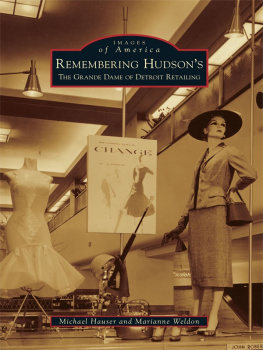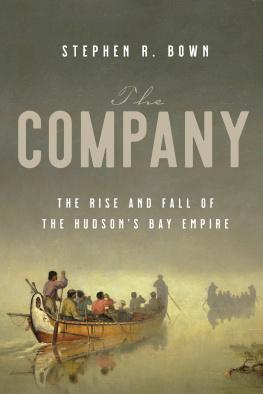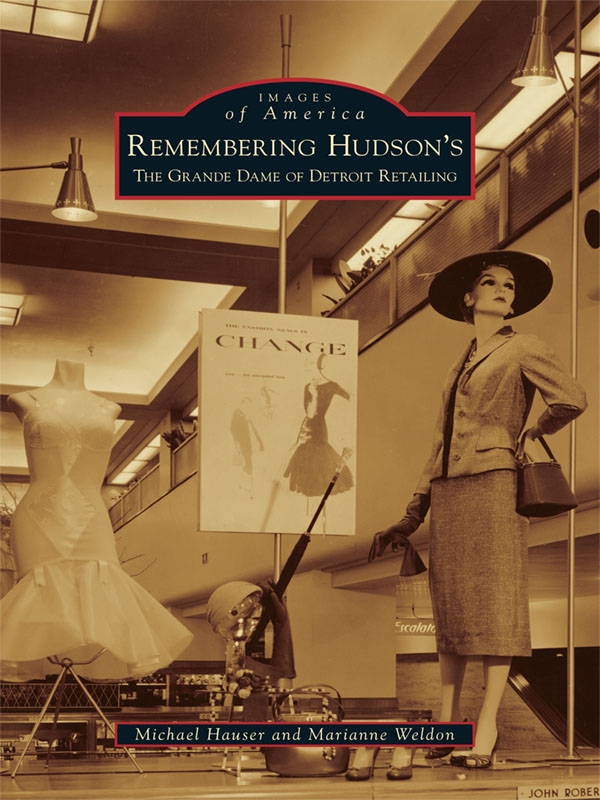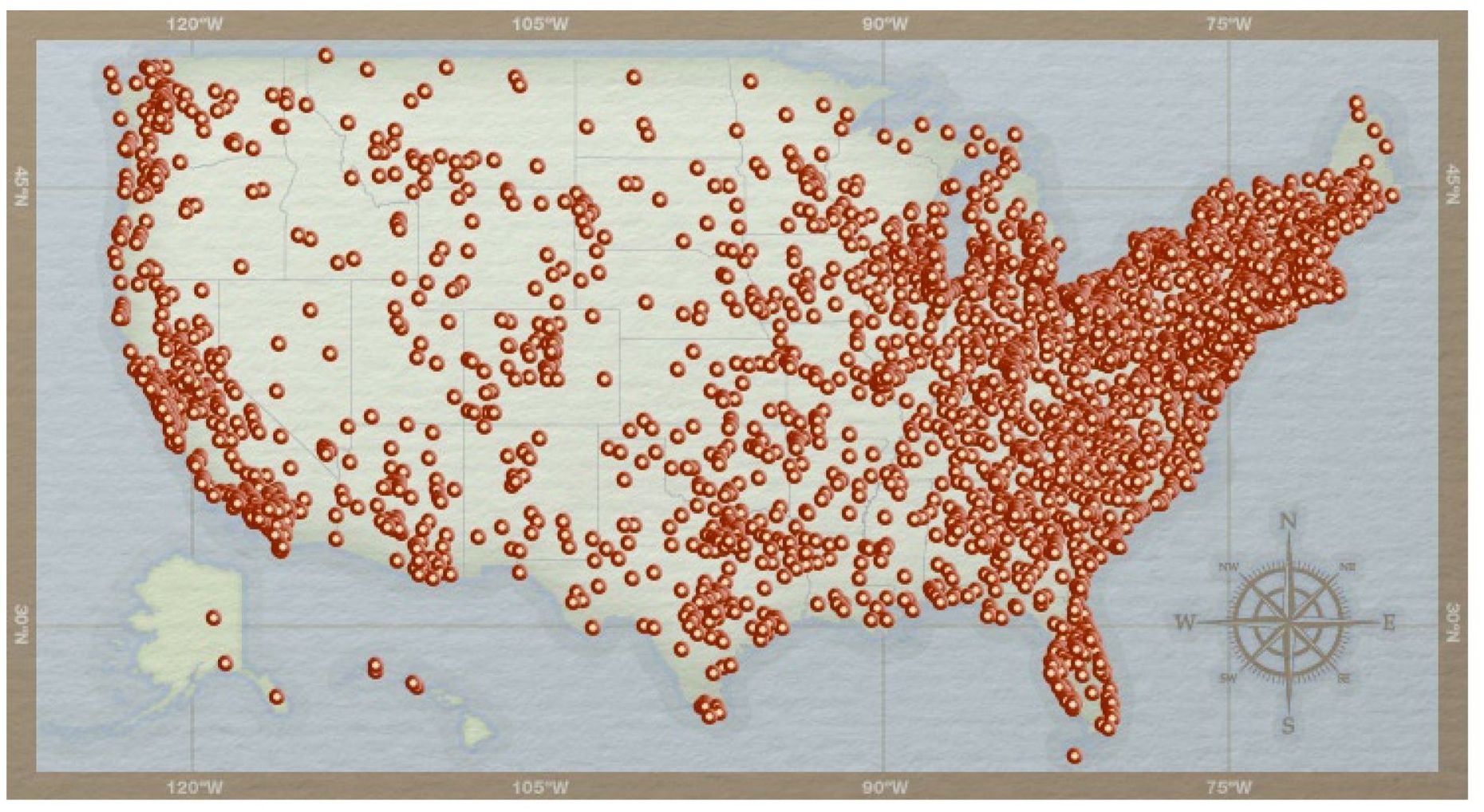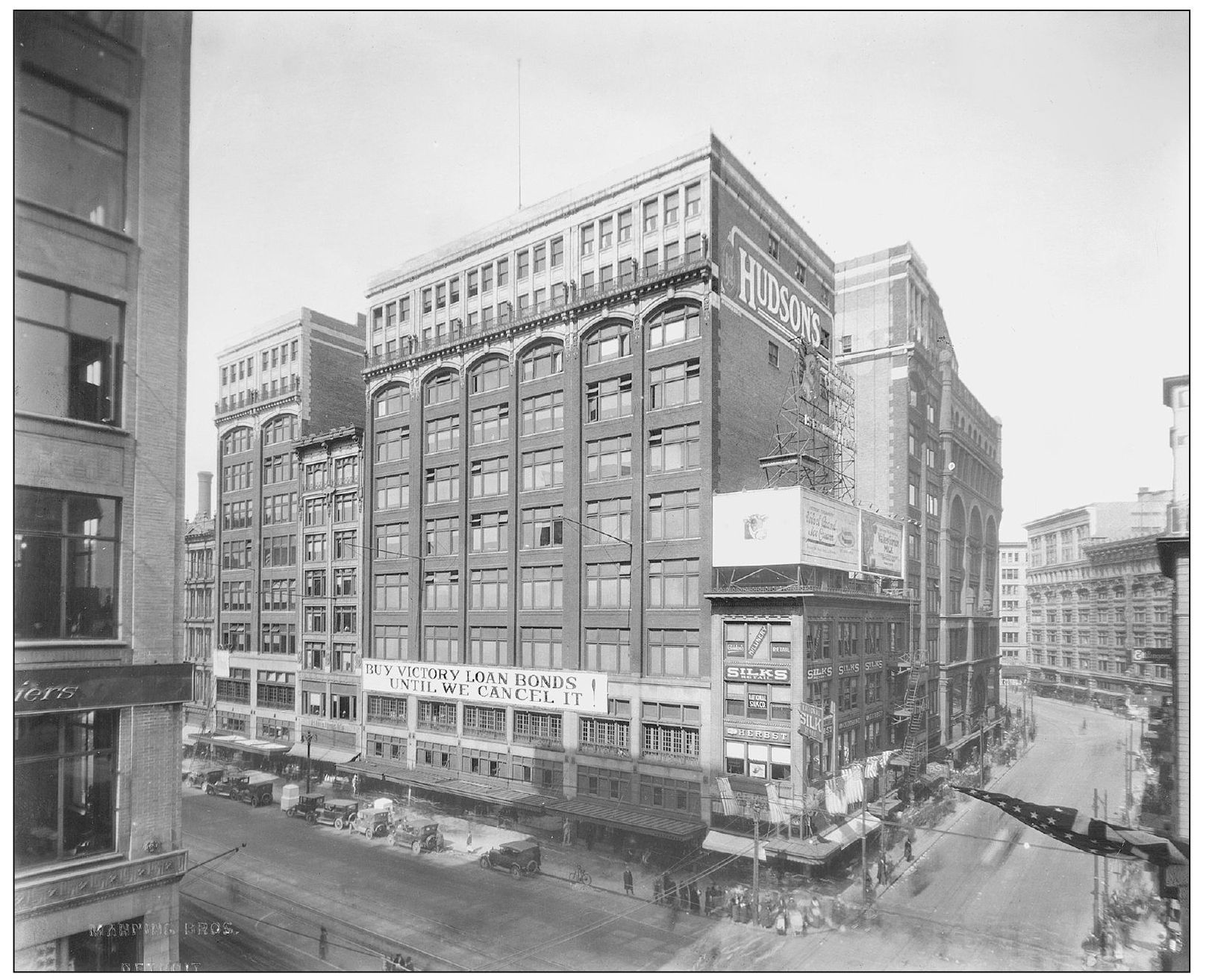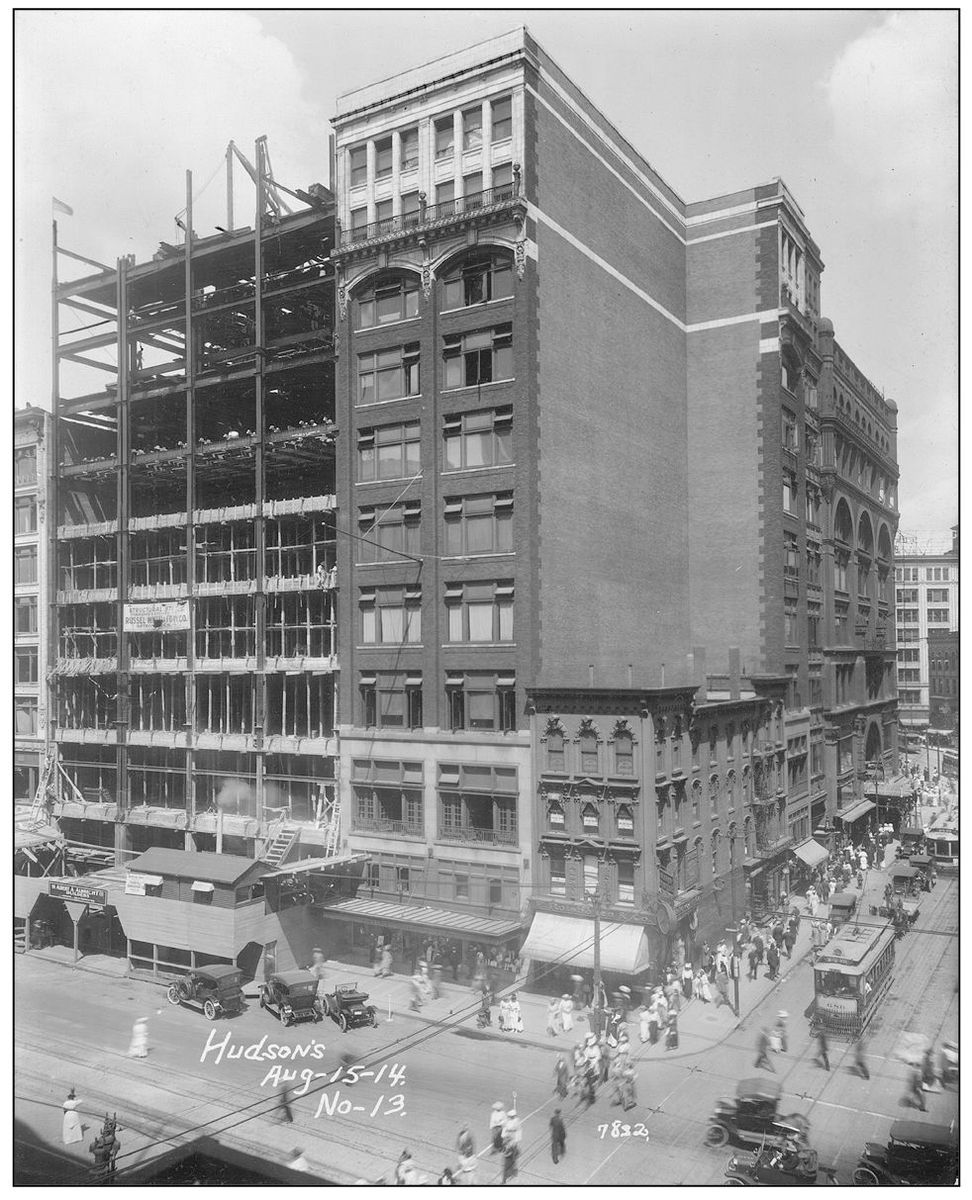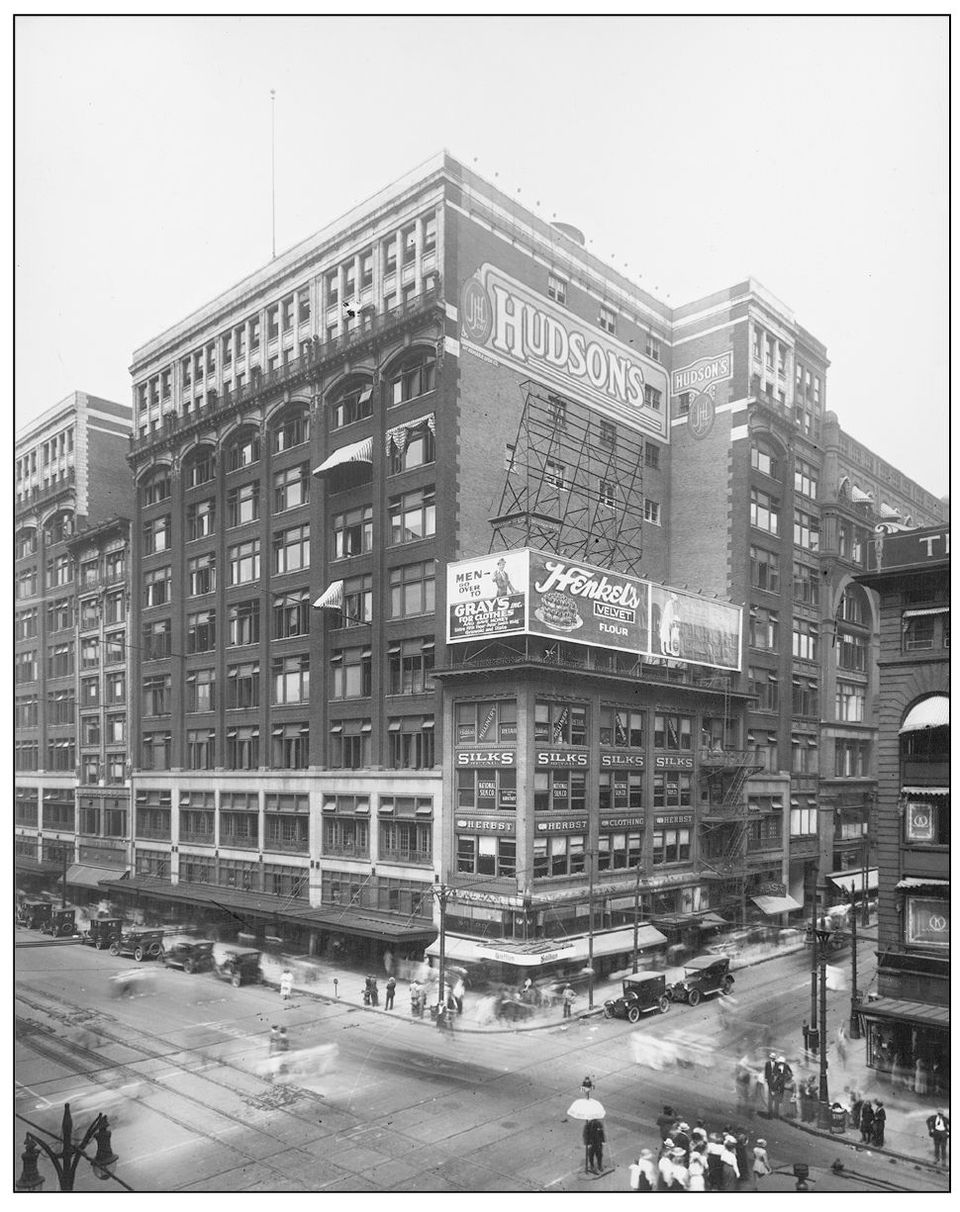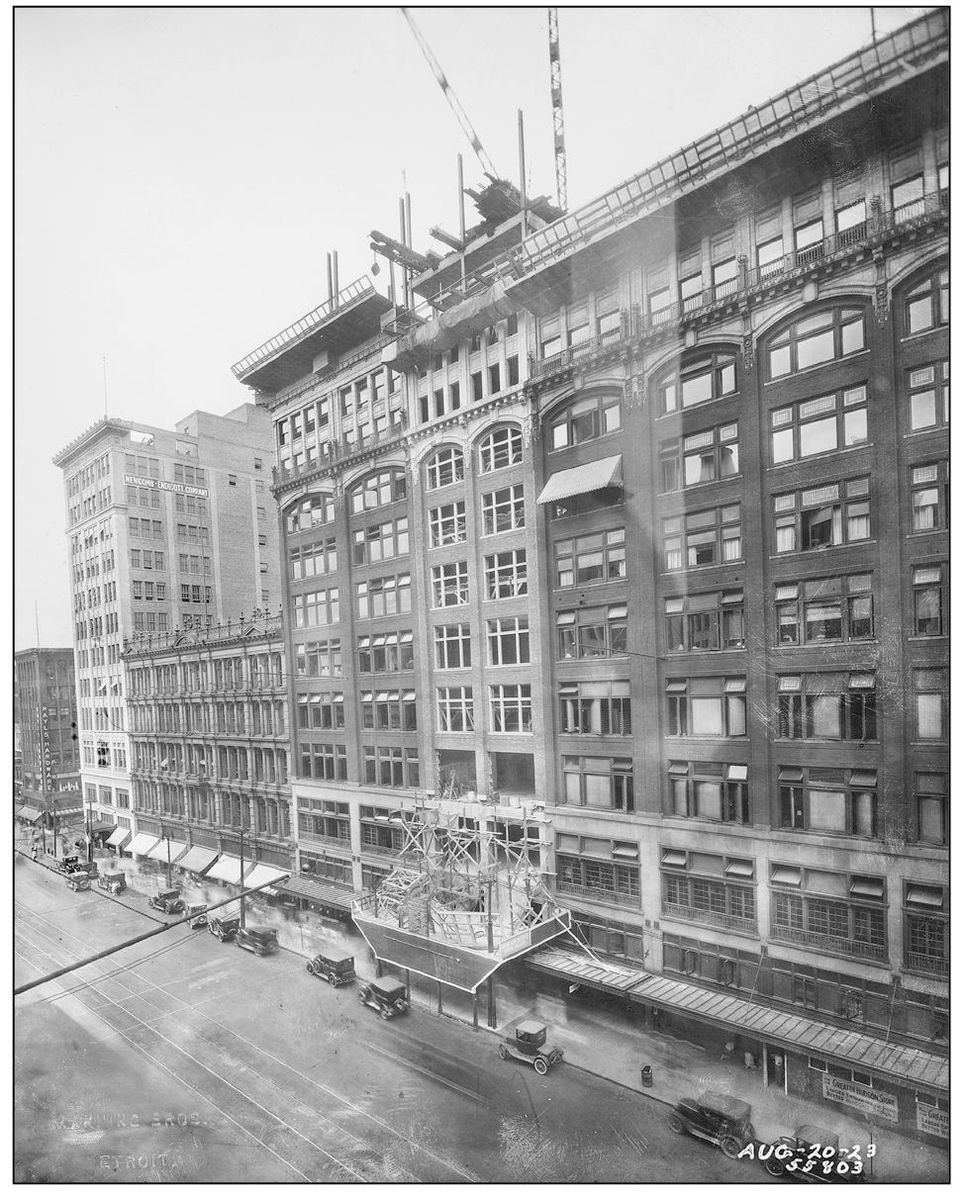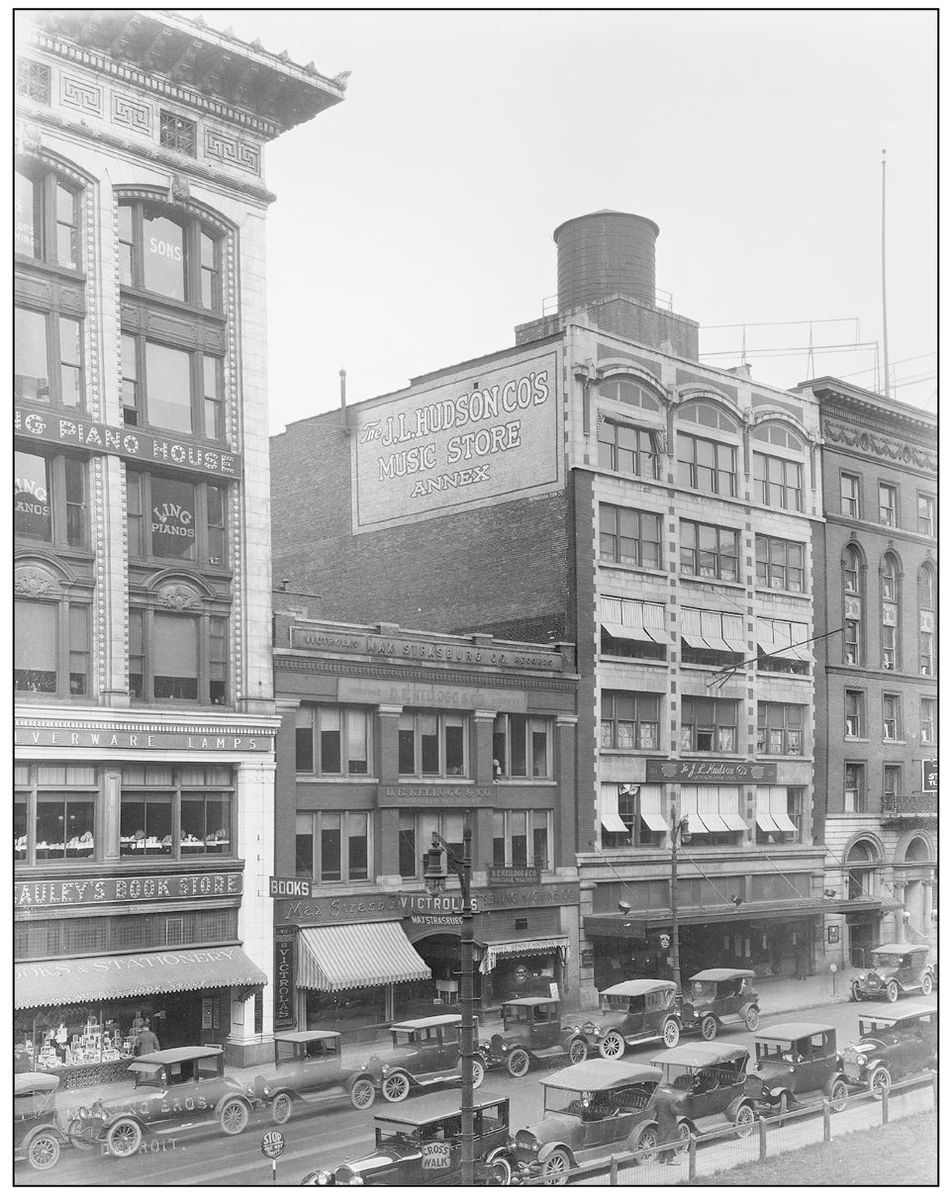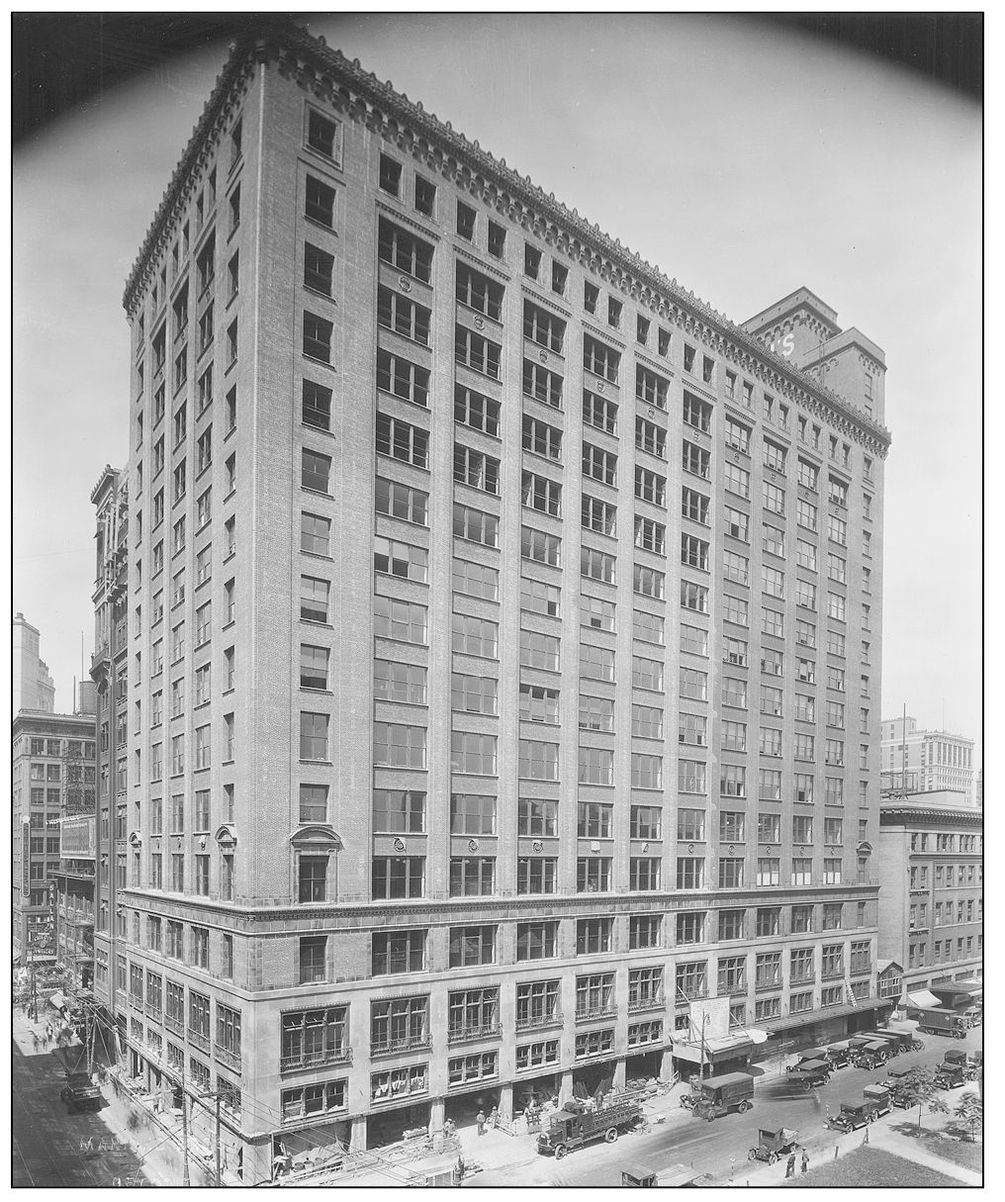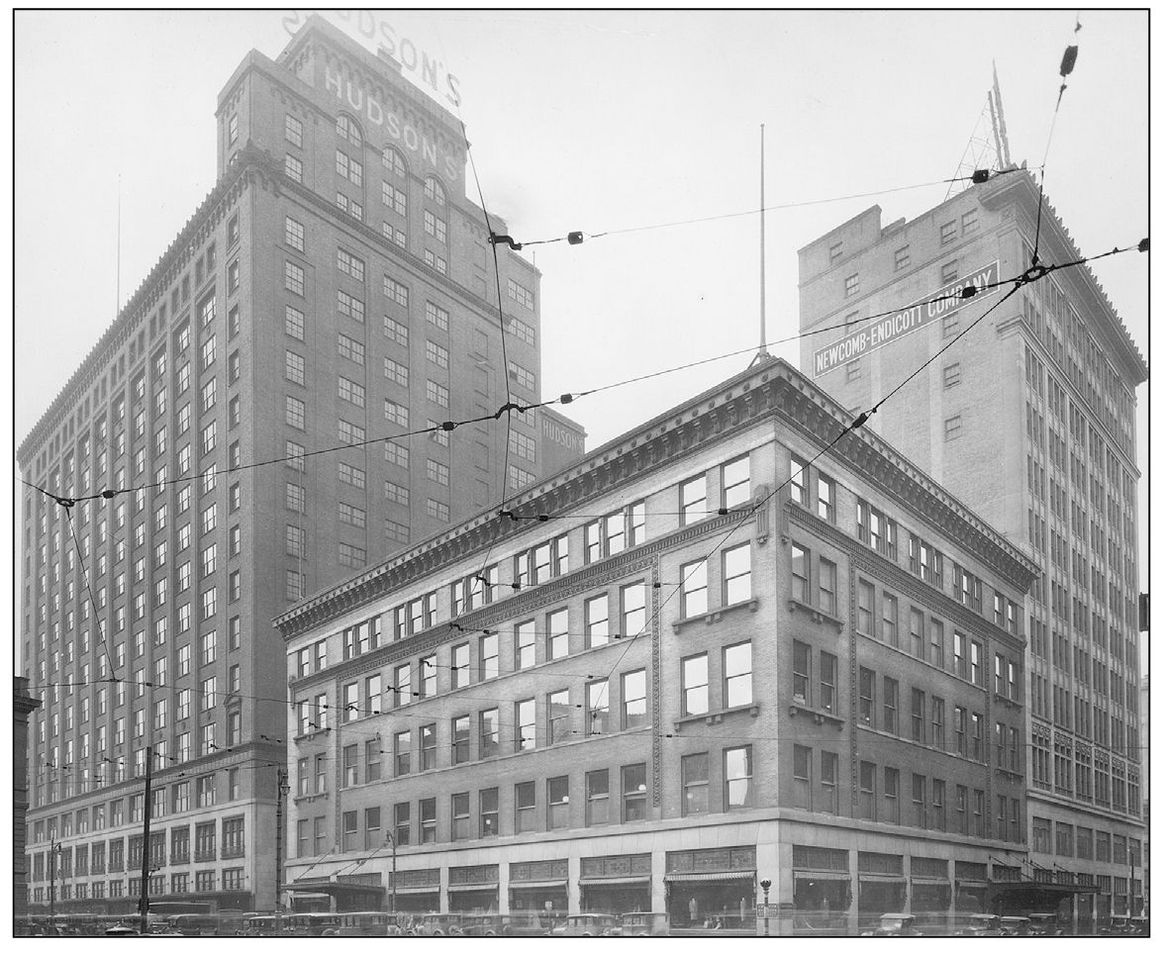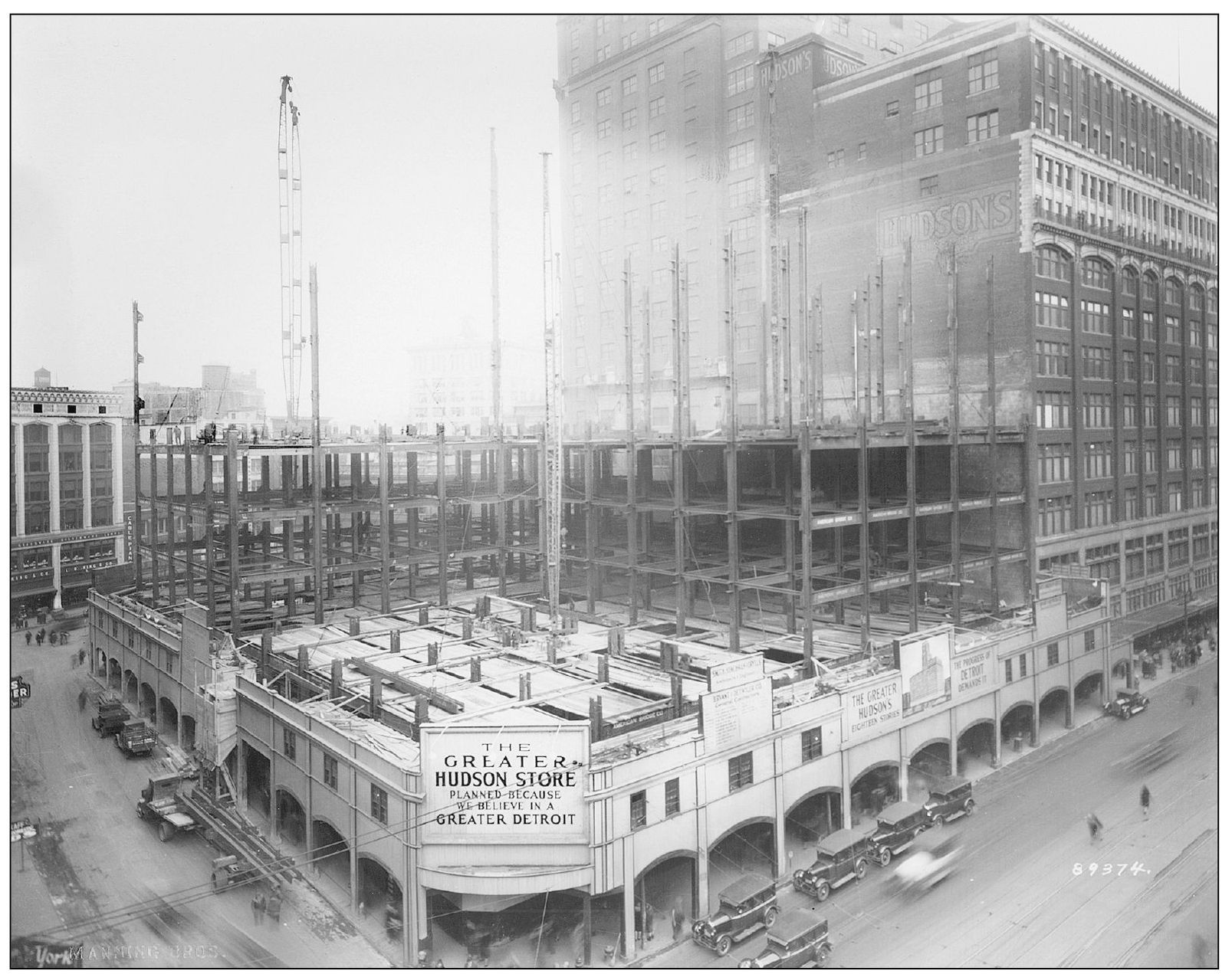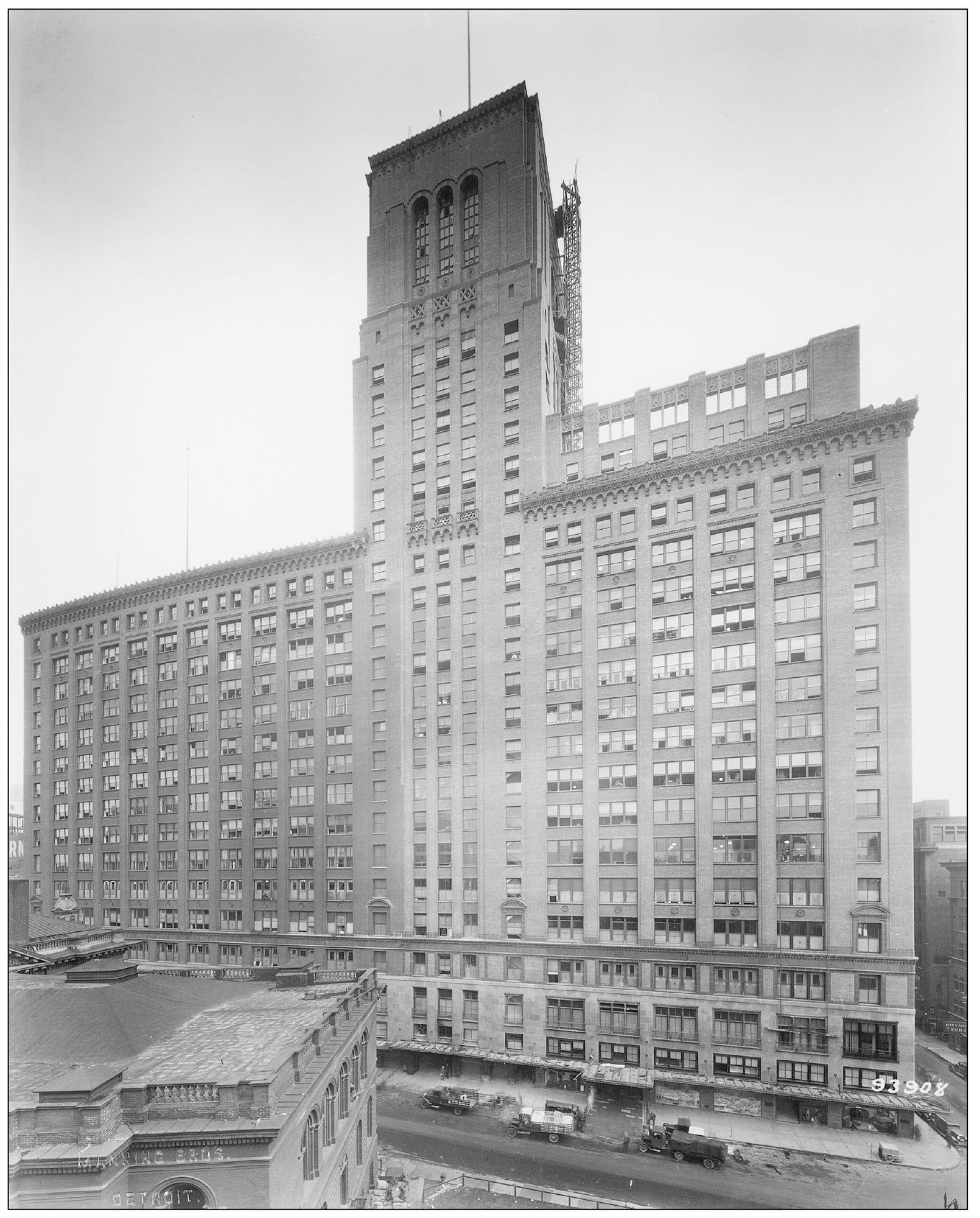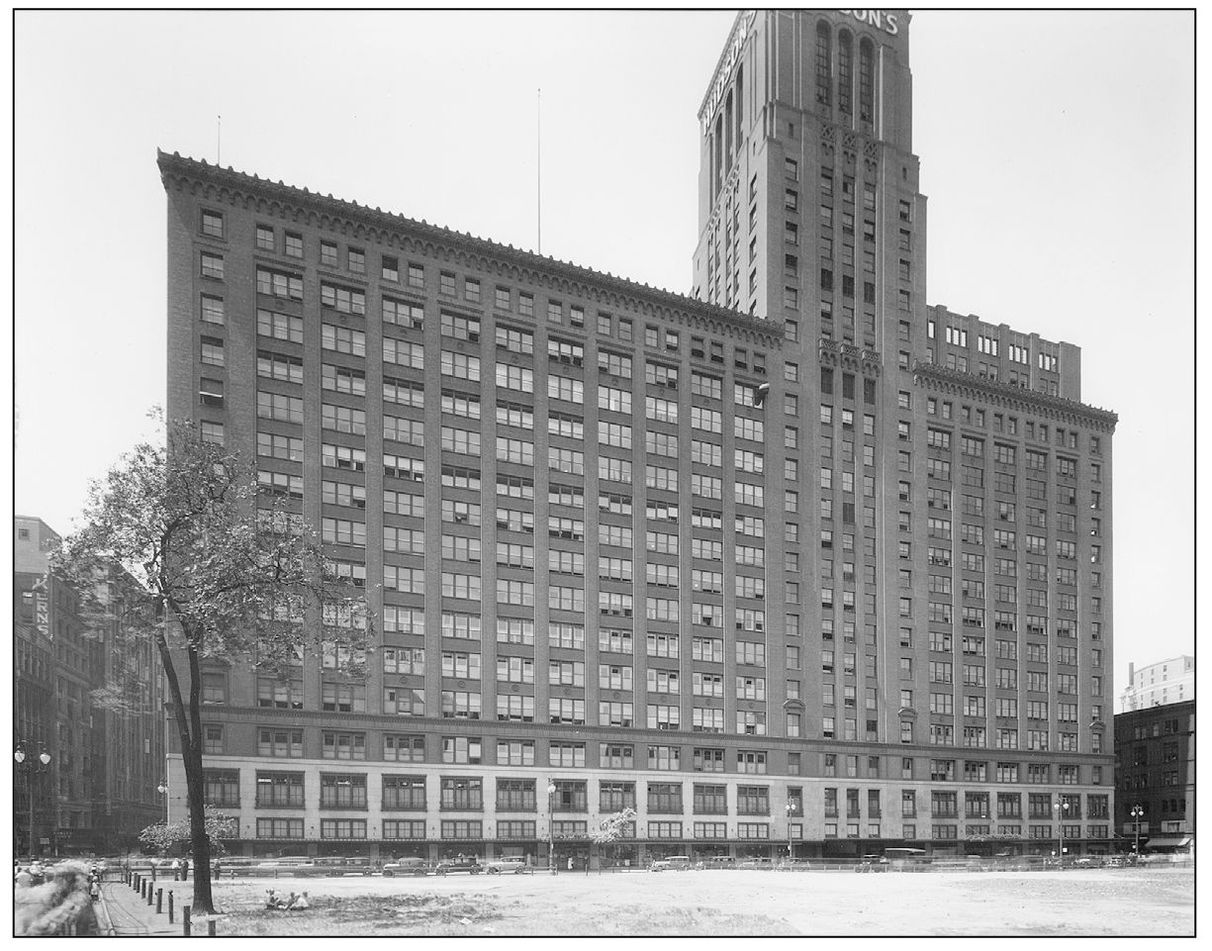One
THE BUILDING
THE BIG STORE EMERGES ON WOODWARD AVENUE, 1919. In this view of the Gratiot Avenue end of the Woodward frontage, Hudsons has not yet acquired the buildings housing Himelhochs Womens Apparel in the center and National Silks on the southern end of the block. The banner is encouraging the public to purchase postWorld War I war bonds. (Courtesy Manning Brothers Historical Collection.)
WOODWARD AVENUE EXPANSION, 1914. The William A. Albrecht Company is erecting steel for the 10-story Woodward addition to Hudsons in this image. The original 1891 Big Red Store building on Farmer Street sits behind the Woodward frontage. Smith, Hinchman and Grylls were the architects for all of the store additions. (Courtesy Detroit Historical Museum.)
LOOKING SOUTH ON WOODWARD AVENUE, 1918. Yet another Woodward parcel is secured for the Hudson store. The Ferry Building on the left housed a portion of the Newcomb Endicott and Company department store. Newcombs was a formidable competitor until Hudsons acquired it in 1927. (Courtesy Manning Brothers Historical Collection.)
WOODWARD AVENUE, LOOKING NORTH FROM GRATIOT AVENUE, 1921. By now, Hudsons had prominent frontage on Woodward, with the exception of several holdouts such as Sallan Jewelers, Himelhochs, and Newcombs at the Grand River Avenue end of the block. Building signage features the distinctive JLH logo. (Courtesy Central Business District Foundation.)
HUDSONS ACQUIRES HIMELHOCHS BUILDING, 1923. At last, Hudsons was able to acquire the Himelhochs store, demolish the building, and construct a 10-story addition to join the other portions of its Woodward Avenue buildings. There is a consistency in the architecture in the various additions. Two of Newcomb Endicotts buildings are on the north end of the block at Grand River Avenue. (Courtesy Manning Brothers Historical Collection.)
HUDSONS MUSIC STORE ANNEX, 1923 . Hudsons leased this structure, the former home of Jerome Remick Music Publishing on Liberty Street, from 1914 to 1931. Located here were pianos, organs, radios, victrolas, sheet music, and recorded music. The store moved to the 13th floor of the Woodward Avenue building in 1931. (Courtesy Manning Brothers Historical Collection.)
FARMER STREET BUILDING REPLACEMENT NEARS COMPLETION, 1925. Construction workers feverishly work to complete the 15-story Farmer addition to Hudsons. This structure replaced the original 1891 Big Red Store that originally stood on this block. During construction, various departments were consolidated into the Woodward Avenue building. (Courtesy Manning Brothers Historical Collection.)
DEMOLISHING NEWCOMB ENDICOTT AND COMPANY STORE, 1927. Following the purchase of Newcombs, Hudsons began to demolish those buildings for a major expansion at the Grand River Avenue end of the block. This expansion was heralded as The Greater Hudson Store, because as the sign on the right declares, The progress of Detroit demands it. (Courtesy Manning Brothers Historical Collection.)
FARMER STREET AND GRAND RIVER AVENUE PRIOR TO DEMOLITION, 1927. This view through overhead streetcar wires is after Hudsons purchased the Newcomb Endicott Company. Newcombs had frontage on Farmer Street and Grand River Avenue and a 12-story tower on Woodward Avenue, as well as the four-story Ferry Building on Woodward. (Courtesy Detroit Historical Museum.)
STRUCTURAL STEEL RISES FOR HUDSONS NORTH ADDITION, 1928. Here a dramatic image captures the L-shaped addition being constructed on the site of the former Newcomb Endicott store. To the left, the 1923 Farmer Street building can be viewed, and to the right are the various Woodward Avenue additions. (Courtesy Manning Brothers Historical Collection.)
THE MIGHTY HUDSON TOWER NEARING COMPLETION, 1928. As viewed from Farmer Street, the massiveness of the Hudson store nearing completion is evident. This addition includes the 25-story tower and the 15-story addition on the Grand River Avenue end. Before the Grand River addition was even completed, the decision was made to add two floors to that end of the structure. (Courtesy Manning Brothers Historical Collection.)
FARMER STREET EXTERIOR, 1928. This image was taken prior to the construction of the new downtown branch of the Detroit Public Library. Kerns department store is on the far left. In the foreground, some young children are enjoying a rare patch of green in the middle of downtown. (Courtesy Detroit Historical Museum.)

